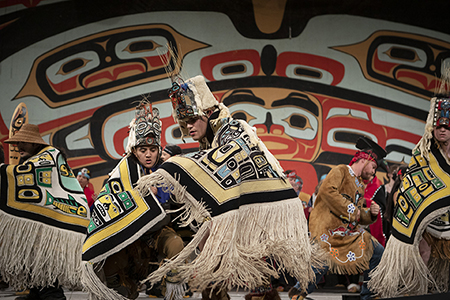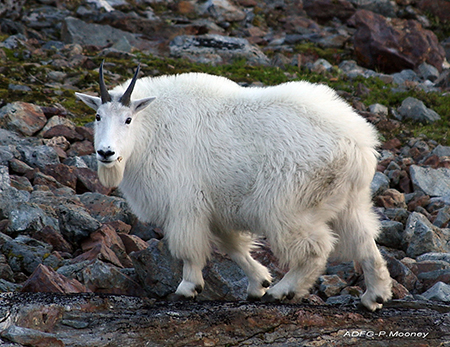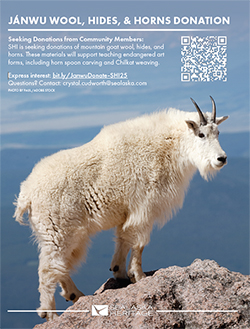Alaska Fish & Wildlife News
October 2025
Goat Hunters can Help Artists and Weavers

Sealaska Heritage Institute, an Alaska Native nonprofit, is asking hunters for donations of mountain goat wool, hides & horns. Chilkat weavers will use goat wool and hair for a traditional Chilkat robe. Horns will be used to revitalize the ancient practice of horn spoon carving.
Joe Zuboff and Crystal Cudworth, based in Juneau with Sealaska Heritage Foundation (SHF), have a grant focused on mountain goat (janwu) and traditional art. Cudworth said two mentoring programs are at the heart of the project. An established Chilkat weaver will mentor about 10 young women for a Chilkat robe weaving project, the goal being to weave a new robe entirely from goat wool.
Zuboff is organizing a second program mentoring 10 young men to learn to hunt goats. They will take hunter education this fall, start deer hunting, and work up to goat hunting. In the short term, weavers can begin working with donated goat wool provided by hunters.
They are also interested in salvaging material from winter-killed or found dead mountain goats. They will pick them up or go out and gather wool and hair from the animal. The same contact information applies.
People may be familiar with the "transfer of possession" process for game, which involves a simple form. That is not neccessary in this case. It is legal to give someone hides and wool, together or separate, of mountain goats. As long as the transfer from the hunter happens after all salvage requirements for meat have been met, a transfer of possession form is not required.

The same is true of horns - depending on their status. A goat hunter who has salvaged the edible meat from a goat can simply send the horns to SHF. As long as the horns are not attached to a skull, people are allowed to sell or purchase them. If the horns are attached to a skull, it may only be donated. A transfer of possession form can be used to document the transfer, but it’s not required if the meat has been salvaged. Horns can also be salvaged from skeletons found in the wild, or from winter-killed animals found dead in the spring.
Horn is made of the protein keratin, the same material that makes fingernails, claws, hooves and hair. The horn is an outer layer with a core of bone. Horn is firmly attached to the core of live bone, but after an animal dies and begins to decay it loosens up and can be pulled free. When used for carving, the horn is pulled off, leaving the nub of bone core on the skull. The hollow horn is shaped and the handle carved with formline designs and sometimes inlaid as well.
Taxidermist Jeff Kihlmire recommends an easy method of removing the horns from a fresh skull. He puts a little water in a bucket and puts a brick in it, and the skull sits on the brick. Cover the pot. “Bring water to a boil, and steam it for five minutes,” he said. “You don’t want to boil the skull or the horns, just steam it for five minutes and they pop right off. If not, give it another three minutes and try again.”

Donated items can be mailed to or dropped off at the Indigenous Science Building (ISB) at 105 Municipal Way, Juneau, Alaska 99801. The ISB is open 8 am - 12 pm and 1 pm - 4:30 pm Monday - Friday. SHI will also accept donations shipped on Alaska Seaplanes and/or Alaska Air Cargo and will pay the cost of shipping.
For any questions, please contact Crystal Cudworth at 907-586-9121 or crystal.cudworth@sealaskaheritage.com
The Sealaska Heritage Institute donation form with more information.
Subscribe to be notified about new issues
Receive a monthly notice about new issues and articles.
